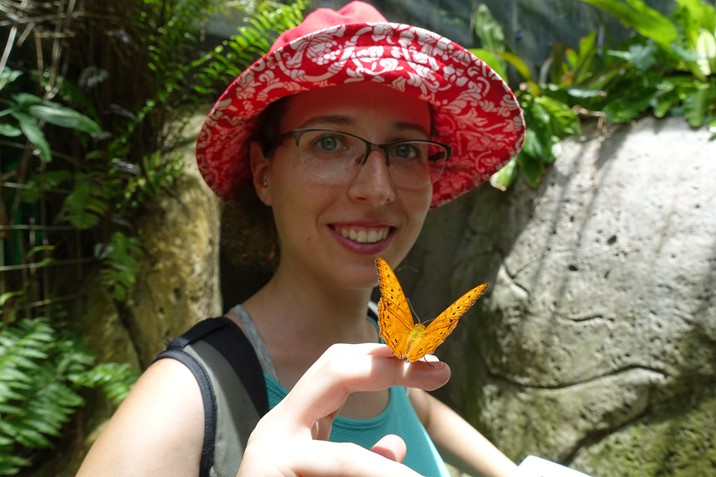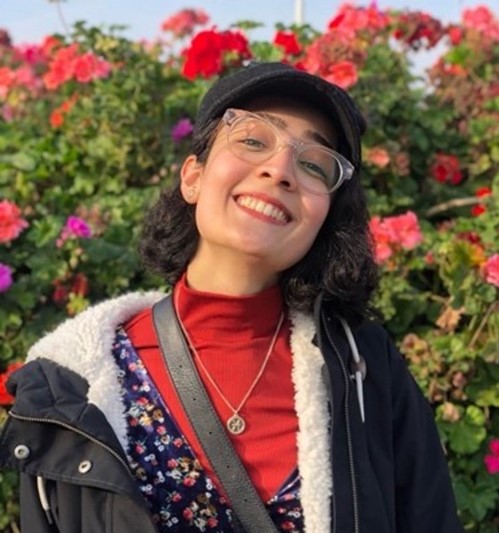By Dr. Cristina Martínez-Lombilla
Inspired by the “Women in Leadership” lecture from the UNSW Inclusive Science Series, I decided to chat with four great women leaders in science. They talked about what it is like being a top science leader in Australia and their thoughts on the future of women in science. The best part of this conversation was that I got to know them more. This post is all about our fruitful conversation.

Professor Lisa Kewley is an Australian Research Council (ARC) Laureate Fellow at ANU and Director of the ARC ASTRO 3D Centre of Excellence.
Professor Fiona Stapleton is a Scientia Professor at the School of Optometry and Vision Science, UNSW, the former Associate Dean, Enterprise in the Faculty of Science, and the UNSW Athena Swan Academic Lead.
Associate Professor Lisa Williams is a social psychologist researcher and the Co-Associate Dean of Equity, Diversity, and Inclusion in UNSW Science.
A typical day in the life
As leading women in science, they all have busy workloads. Their daily schedules are tight and include international meetings at awkward hours of the day, as well as family duties. A/Prof. Lisa Williams, as mother of a toddler, worked flexible hours until early 2022, when she started sending her son to daycare. She would then use her afternoons for meetings, supervising research students, reviewing papers, teaching and activities associated with her role as co-Associate Dean of EDI in the UNSW Faculty of Science. This flexibility meant she often worked evenings. The other leaders have older children and practice what Prof. Lisa Kewley called ‘extreme time management’ to get their things done. They save one day of the week for their own research and then split the rest of the days into ‘back-to-back meeting hours’, and ‘catch-up time’ for reading, writing, reviewing, or supervising postdocs and students. Again, they work flexibly, using time early in the morning or in the evening for these tasks. Prof. Sarah Brough described how the pandemic affected her usual time management. She had many domestic and international trips and used that time for reading. During the pandemic, she had to adjust to losing that productive time in addition to homeschooling her primary-school age son. This made her struggle to find time for her own research.
Plans to address the negative impact of the COVID-19 pandemic on academic women
Prof. Fiona Stapleton explained that there are studies looking at the impact of the pandemic on professional and academic staff across institutions in Australia, comparing the situation internationally such as in Asia-Pacific and across the globe. At UNSW, a follow-up study is currently underway exploring the longer-term impact of the pandemic on work practice. When talking about the results of these studies, the four women agreed that flexible work as the norm is the most positive outcome of the pandemic. On the other hand, on-campus work is key for engaging new staff and students who have faced a very hard and lonely situation during the pandemic, particularly when starting work or study from overseas. In that regard, A/Prof. Lisa Williams added that UNSW has implemented a new Flexible Work Policy and several schemes to support staff whose research and teaching activities have been negatively impacted by the pandemic broadly and lockdowns specifically.
Prof. Lisa Kewley has been working on research regarding the number of publications during the pandemic and their resulting impact on promotion and recruitment process, as well as the possible future impact on the gender gap. Although the total number of publications during the pandemic (from early 2020 up to October 2021) went up, the number of publications lead by women went down. This could potentially affect promotion applications and outcomes in the following years.
They all were concerned by the low number of academic promotions in general, which has also slowed down further since the pandemic. Another general worry is that the consequences of the pandemic on academia in the long term are yet to be seen.
The importance of diverse role models
According to a study on gender balance in the field of Australian astronomy led by Prof. Lisa Kewley, when more women are in leadership roles, more female early career researchers and students join their groups and continue in their careers. This happens due to the combination of 3 factors. First is the available options, as they tend to work with people they feel more comfortable with and whose life experiences they can relate to. Second, more women apply for the position when the person advertising the role is a woman. And finally, the hiring process is a pivotal step in the pathway to establishing a career as it has been shown that, when hiring committees have more women, they are more likely to hire women.
How should one respond to statements like ”Positive hiring policies promote access for under-qualified women” or “Women scientists have not been important throughout history”?
All of the women leaders I spoke to, agreed that the best tactic, after taking a deep breath, is to just assert that this is not true. In the past, women have left academia at larger rates than men. Thus, those who remain may have had to overcome many difficulties, which make them very good at their job and potentially better than similarly qualified men. This is clearly reflected when looking at the list of candidates for high academic positions. The proportion of applicants is often around 3 women out of 10. However, these women are not the average – they have outstanding qualifications. So, you cannot assume that having a lower proportion of women applicants means that they are less qualified for the position because usually it is the opposite.
Regarding women scientists throughout history, this is just a matter of digging – the harder you look, the more women you see. When you start looking for information on any scientific topic you always find women whose contributions have been overlooked (and the same happens for other minority groups). There are very well-documented resources on why women have been pushed away from science and how both passive and active policies are trying to correct historic gender imbalances. Prof. Lisa Williams and colleagues discuss more about the issues that contribute to historical gender gaps in the sciences and their mitigation in their work entitled “The Future of Women in Psychological Science”.
Their interests beyond science
They are all active women. Prof. Fiona S. and Prof. Lisa K. love running before going to work as this helps with their mental health, and Prof. Sarah B. prefers to go surfing. Prof. Lisa W. enjoys listening to podcasts while on long walks and she hopes to do this more often as her son grows older. Prof. Lisa K. also enjoys painting lessons and paints with friends. Prof. Fiona S. started learning to play the piano a few years ago.
Some words of advice for young women in Science, Technology, Engineering and Mathematics (STEM)
These fantastic women agreed that there are a few key points to consider in the early career stages. It is very important to seek out opportunities, roles, and mentors, and to keep cultivating this valuable network over the years. They also recommend consulting a career coach as part of your support and advice network, if possible. When problems arise, do not be afraid to ask for help as problems are often easier to fix than they appear to be. Do not hesitate to say ‘no’ when required – setting boundaries will help ensure you don’t become overwhelmed with basics. Finally, the women agreed that taking the time for being strategic and intentional with career choices will pay off in the end and smooth the road ahead.
My own outcomes…
As an early career researcher and mum of a 2-year-old, this has been a reassuring conversation. Although busy workloads are constant throughout the academic career (no one said this was an easy path!), they have demonstrated that is possible to be a successful women leader in science while maintaining work-life balance. It is also encouraging to see all the new studies referred above aiming to measure historical and current gender inequity in the STEM workforce. These studies certainly provide the tools to address those issues in a conscious and effective way, supporting successful and long careers for young women in STEM. I am deeply grateful to Prof. Sarah B., Prof. Lisa W., Prof. Fiona S., and Prof. Lisa W. for inspiring me and allowing me to pass on their wisdom and advice to the many other young women aiming to pursue careers in STEM.







